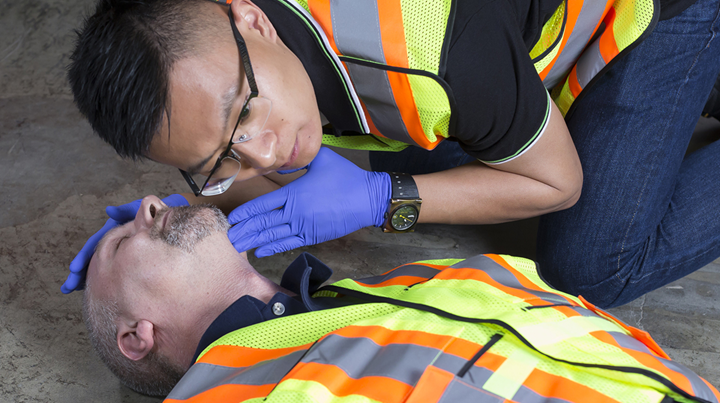Changes coming to workplace first aid requirements
On November 1, 2024, amendments to the Occupational Health and Safety (OHS) Regulation relating to occupational first aid will come into effect. The changes mean employers across the province will need to review their current first aid plans and make necessary adjustments.
By Tanya Colledge
“The current first aid requirements in the OHS Regulation were enacted in 2004 and have been in place for over 20 years with minimal updates,” says senior prevention advisor Angélique Prince. “These updates reflect the learnings from two decades of consultation, education, and enforcement across British Columbia. They also recognize remote or less-accessible workplaces created by the unique geography of our province. We believe the amendments will enhance first aid across B.C. and help keep workers safe.”
Workplace assessments
Under the amended OHS Regulation, employers will have a duty to establish their workplace first aid requirements in consultation with their workers. Employers will need to complete a written first aid assessment for each workplace, considering the following characteristics:
- Number of workers at the workplace
- Hazard rating
- Whether the workplace is “remote” — meaning more than 30-minutes’ travel time from the closest ambulance station (previously defined as 20 minutes from the closest hospital)
- Whether the workplace is “less accessible” — meaning either the workplace or a hazardous work area cannot be safely accessed by ambulance or ambulance personnel
The assessment will also help employers determine their minimum requirements for first aid supplies, facilities, and training. There are four classes for determining first aid requirements:
- Class 1: accessible and not remote
- Class 2: a remote workplace but accessible
- Class 3: not a remote workplace, but less accessible
- Class 4: a workplace that is both remote and less accessible
“We’ve seen gaps in first aid preparedness among different sectors around the province,” explains Prince. “In the forestry sector, for example, a worksite may be close to a hospital or ambulance station but still very isolated because of the terrain. These changes guide employers to ensure they are prepared. They also take what is already best practice and elevate it to a requirement to ensure consistency across all industries.”
Updated requirements align with national standards
The amendments to the OHS Regulation also align with standards established by the Canadian Standards Association (CSA) — benchmarks used across the country to guide workplace first aid programs. This will result in new names for levels of first aid attendant, as well as changes in the duration of training courses. However, anyone holding a current valid first aid certificate under the old requirements can continue to use it until it expires.
First aid kit and equipment requirements will also change to align with the CSA standards. Once an employer has assessed their workplace factors, they can refer to the OHS Regulation to determine the minimum for first aid kit, supplies, and equipment they will need to have on hand. While some of the kit materials have changed, employers will be required to move to these new contents only if there are significant gaps in their current kits, as new kits are purchased, or as supplies are replaced.
Prince says the impact of the changes is expected to be minimal for employers in accessible urban settings, but it could be significant for those with less accessible and/or remote workplaces.
“Depending on the number of workers, we anticipate class 3 and 4 workplaces will be required to make quite a few changes to ensure their first aid programs align with these new amendments.”
For more information
These amendments will take effect November 1, 2024, to ensure employers have adequate time to review their first aid plans, purchase new equipment, and prepare their workers.
WorkSafeBC is developing guidelines and additional resources that will be rolled out over the coming months to support employers in implementing the new requirements. For more information, visit:
This information originally appeared in the Spring 2024 issue of WorkSafe Magazine. To read more or to subscribe, visit WorkSafe Magazine.

